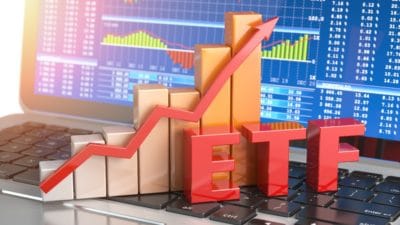Dividend investors often walk a precarious tightrope in their hunt for consistent income.
On one side, there’s the ever-looming danger of yield traps — stocks or funds that lure investors with high yields but whose underlying fundamentals are as shaky. These stocks seem lucrative, but they often mask underlying issues in the business, which can lead to sudden dividend cuts and steep capital losses.
On the other side, there’s the timing issue. While dividends are a welcome addition to any portfolio, most companies distribute them on a quarterly basis, with a few paying monthly.
That can be somewhat unsatisfying for investors who relish the idea of a more consistent monthly income stream, whether for budgeting reasons, to fund monthly expenses, or simply for the pleasure of seeing that steady influx of cash.
Yet what if I told you there’s a solution that not only dodges the pitfalls of yield traps but also showers you with a dividend every single month? Enter the realm of covered call exchange-traded funds (ETFs). Let’s break them down and go over my pick today.
Covered call ETF 101
Imagine you own a beautiful apple tree. Every year, this tree produces vibrant, juicy apples. You can choose to sell all these apples at the end of the season, hoping for the best market price.
Instead, you decide to sell the rights to some of your future apples upfront for a guaranteed price, ensuring you have immediate cash in hand. You may not get the absolute highest price if apple prices soar later in the season, but you’ve locked in a sure profit.
This apple tree analogy is, in essence, how covered call ETFs work. At the heart of a covered call ETF lies a collection of stocks akin to our apples. These stocks are usually selected based on certain strategies or indexes.
Rather than simply holding these stocks and hoping for the best, the ETF employs a technique called writing covered calls. Here’s how it works step by step without the usual options jargon and math:
- The basics: The ETF owns a portfolio of stocks, like many other traditional ETFs.
- Writing the call: The ETF then “writes” or “sells” call options on these stocks. A call option gives the buyer the right, but not the obligation, to purchase the stock at a specified price within a certain timeframe.
- Immediate cash: By selling these call options, the ETF receives an immediate cash payment, known as the option premium. This premium is then typically distributed to the ETF’s investors — thus the enticing monthly dividends.
- Sacrificing upside: In exchange for this immediate cash, the ETF sacrifices some of the upside potential. If the stock’s price skyrockets, the ETF might miss out on some of those gains because it has effectively “promised” its stocks at a set price.
My covered call ETF pick
I like BMO Canadian High Dividend Covered Call ETF (TSX:ZWC). This ETF has a portfolio of Canadian dividend stocks based on dividend-growth rate, yield, and payout ratio. Then the ETF manager writes covered call options on select stocks to enhance income.
By buying ZWC, investors get an above-average 8.01% annualized distribution yield as of August 25, 2023, which is composed of both dividends and options premiums. As a bonus, the ETF also pays out on a monthly basis.
However, keep in mind that ZWC is pricey compared to normal index ETFs, with an expense ratio of 0.72%. If you’re looking for a low-cost, growth-oriented pick, consider augmenting ZWC with some select stock picks (and the Fool has some great suggestions for those below).







